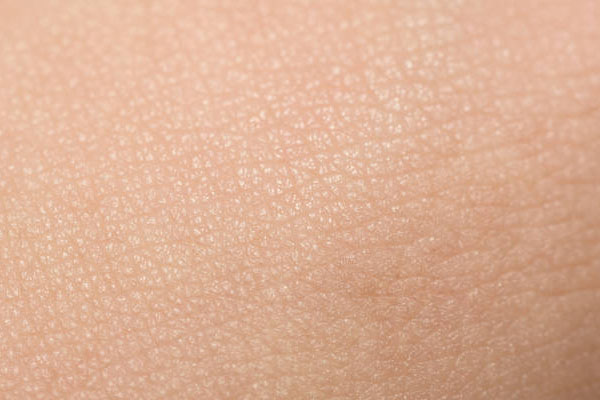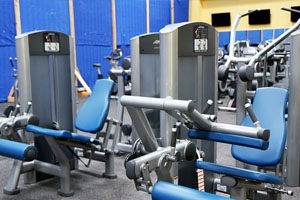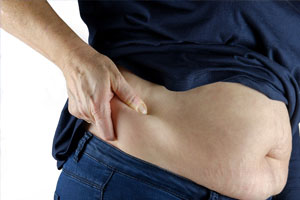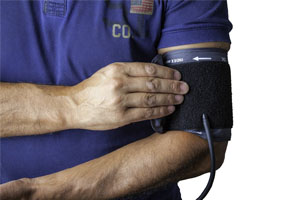Discover proven strategies to address loose or sagging skin Whether it s due to aging or weight loss, learn how to reduce loose skin naturally and through medical treatments Regain skin elasticity and confidence today
If you've ever wondered, "How can I reduce loose skin?" you're not alone. Loose or sagging skin can be a concern for many people, whether it's due to aging, weight loss, or other factors. While it's a natural part of life, there are several strategies and solutions available to help improve skin tightness and overall appearance. In this article, we'll explore effective methods to address loose skin, both through natural approaches and medical procedures.

Understanding Loose Skin
Understanding loose skin is the first crucial step in addressing how to reduce it. Loose skin refers to the loss of tightness and elasticity in the skin, often occurring due to factors such as aging, weight loss, pregnancy, or other causes. This issue can affect anyone and is not limited to a specific age group.
Why Does Skin Become Loose?
There are several primary reasons for loose skin, including:
- Aging: As we age, the skin gradually loses collagen and elastin fibers, leading to skin laxity.
- Weight Fluctuations: Rapid weight loss or gain, particularly when repeated, can result in loose skin.
- Pregnancy: The rapid stretching of the skin during pregnancy, especially in the abdomen, thighs, and breasts, can lead to loose skin.
- Lifestyle Factors: Smoking, sun exposure, an unhealthy diet, and lack of exercise can also accelerate skin laxity.
Possible Solutions
While loose skin is a common concern, there are several approaches to improve skin tightness. These methods include exercise, maintaining a healthy lifestyle, professional treatments, and surgical options. In the following article, we will explore these methods and provide more information on how to reduce loose skin.
Loose skin doesn't have to be an insurmountable issue, but it does require the right measures. Whether you're looking to enhance your appearance or boost your confidence, you can achieve your goals by understanding the fundamental principles of skin and the actions you can take.
Factors Contributing to Loose Skin
Several factors contribute to the development of loose skin. Understanding these underlying causes is essential for addressing the issue effectively:
- Aging: As we grow older, the skin's natural production of collagen and elastin decreases. These proteins are crucial for skin's elasticity and firmness, so their reduction leads to sagging and loose skin.
- Rapid Weight Loss: Losing a significant amount of weight in a short time, such as through crash diets or bariatric surgery, can leave the skin without enough time to adapt, resulting in loose skin.
- Pregnancy: During pregnancy, the skin on the abdomen, thighs, and breasts stretches to accommodate the growing baby. After childbirth, some women experience loose skin in these areas.
- Lifestyle Choices: Unhealthy habits like smoking and excessive sun exposure can damage the skin's elasticity. A poor diet lacking essential nutrients may also contribute to loose skin.
- Genetics: Genetics play a role in how your skin ages and its propensity to develop loose skin. Some people are genetically predisposed to experience it more than others.
It's important to remember that multiple factors can combine to cause loose skin. Addressing these factors can help prevent or reduce the appearance of sagging skin. In the following sections, we'll explore strategies to address loose skin effectively.
Healthy Lifestyle Choices for Skin Tightening
Adopting a healthy lifestyle can play a significant role in skin tightening. These choices not only help prevent further skin laxity but also promote a more youthful appearance:
- Hydration: Staying well-hydrated is essential for maintaining skin elasticity. Drinking an adequate amount of water keeps your skin plump and can reduce the appearance of loose skin.
- Nutrition: A diet rich in vitamins, minerals, and antioxidants can benefit your skin. Foods high in collagen-boosting nutrients, like vitamin C, can help tighten the skin.
- Regular Exercise: Engaging in physical activity can help tone the underlying muscles and improve blood circulation, which is essential for skin health.
- Sun Protection: UV radiation can damage collagen and elastin fibers, leading to sagging skin. Apply sunscreen, wear protective clothing, and limit sun exposure to protect your skin's firmness.
- Avoid Smoking and Excessive Alcohol: Smoking and heavy alcohol consumption can deplete the skin's nutrients and weaken its elasticity. Quitting smoking and reducing alcohol intake can have a positive impact.
- Sleep: Quality sleep allows the body to repair and regenerate. Aim for 7-9 hours of sleep per night to support overall skin health.
By making these healthy lifestyle choices, you can improve your skin's tightness and overall appearance. The next section will explore cosmetic and medical options to further address loose skin.
Effective Exercises for Reducing Loose Skin
Exercise is a crucial component in tightening loose skin. It helps build muscle, improve circulation, and promote overall skin health. Here are some effective exercises to include in your routine:
- Strength Training: Resistance exercises, such as weight lifting, can help build muscle and fill the space left by sagging skin. Target areas like the arms, thighs, and abdomen for the best results.
- Cardiovascular Exercises: Cardio workouts, like running, swimming, or cycling, can help you burn calories and reduce excess fat, which can contribute to loose skin.
- Yoga and Pilates: These practices focus on flexibility, balance, and core strength. Regular sessions can help tone your body and enhance skin elasticity.
- Bodyweight Exercises: Movements like squats, lunges, and push-ups are effective in targeting various muscle groups. They can help improve your body's appearance and promote skin tightness.
When incorporating exercises into your routine, consistency is key. Aim for at least 150 minutes of moderate-intensity aerobic activity or 75 minutes of vigorous-intensity aerobic activity each week, along with strength training exercises two days a week. Consult a fitness professional or a trainer to create a tailored exercise plan that suits your needs and helps you achieve your skin-tightening goals.
Diet and Nutrition for Skin Elasticity
Your diet plays a crucial role in maintaining skin elasticity and preventing loose skin. By consuming the right nutrients, you can promote collagen production and overall skin health. Here are some dietary guidelines to help keep your skin firm and elastic:
- Protein: Incorporate lean protein sources like chicken, fish, and tofu into your meals. Protein is essential for collagen production, which contributes to skin elasticity.
- Antioxidants: Consume foods rich in antioxidants, such as berries, citrus fruits, and leafy greens. Antioxidants help protect your skin from oxidative stress and support its elasticity.
- Healthy Fats: Include sources of healthy fats like avocados, nuts, and olive oil in your diet. These fats maintain skin moisture and flexibility.
- Vitamins and Minerals: Ensure you get an adequate intake of vitamins A, C, and E, as well as minerals like zinc and selenium. These nutrients are vital for skin health and elasticity.
- Hydration: Drink plenty of water to keep your skin hydrated. Proper hydration is essential for maintaining skin elasticity.
- Collagen-Boosting Foods: Foods like bone broth, chicken skin, and citrus fruits can help boost collagen production in your body.
- Limit Sugar and Processed Foods: Excessive sugar and processed foods can contribute to skin aging. Reduce your consumption of these items for healthier skin.
Remember that a balanced and nutritious diet is essential for overall health, and it reflects in your skin's elasticity and appearance. Consult with a registered dietitian or nutritionist to create a personalized diet plan that addresses your specific needs and skin-tightening goals.
Non-Invasive Skin Tightening Treatments
Non-invasive skin tightening treatments are popular options for individuals looking to improve skin elasticity without surgical procedures. These treatments use various technologies to stimulate collagen production and tighten the skin. Some common non-invasive treatments include:
- Radiofrequency (RF) Therapy: RF treatments deliver controlled heat to the skin's deeper layers, encouraging collagen production and improving skin firmness.
- Ultrasound Therapy: Ultrasound waves stimulate collagen synthesis and tighten the skin, targeting specific areas of concern.
- Laser Therapy: Laser treatments can address loose skin by stimulating collagen growth and enhancing overall skin texture and tone.
- Cryolipolysis: While primarily used for fat reduction, cryolipolysis can also have a skin-tightening effect in some cases by promoting collagen formation.
- Microfocused Ultrasound (MFU): MFU treatments deliver ultrasound energy to deep skin layers, triggering collagen renewal and skin tightening.
- Chemical Peels: Certain chemical peels can improve skin texture and stimulate collagen, resulting in firmer skin.
These non-invasive treatments are typically safe and require little to no downtime. However, it's essential to consult with a dermatologist or skincare professional before undergoing any procedure to determine which treatment is best for your specific needs and to ensure you are a suitable candidate. The results can vary depending on individual factors, so realistic expectations are important.
Surgical Options for Loose Skin
For individuals with severe loose skin issues, surgical options are available to achieve more dramatic results. These procedures are typically performed by board-certified plastic surgeons and may involve some downtime for recovery. Some common surgical options for loose skin include:
- Facelift: A facelift, also known as rhytidectomy, focuses on tightening sagging facial skin and correcting wrinkles. It involves the removal of excess skin and repositioning of facial tissues.
- Body Lift: Body lift surgeries are comprehensive procedures that address loose skin on the abdomen, thighs, buttocks, and other areas. They can provide significant skin tightening results.
- Arm Lift (Brachioplasty): Brachioplasty is a surgical procedure that removes excess skin and fat from the upper arms, resulting in a firmer and more toned appearance.
- Thigh Lift: Thigh lift surgery is designed to eliminate loose skin and fat from the thighs, enhancing contour and skin tightness.
- Tummy Tuck (Abdominoplasty): Abdominoplasty is a procedure to tighten the abdominal area by removing excess skin and fat. It can help achieve a flatter and firmer stomach.
- Breast Lift (Mastopexy): A breast lift procedure can correct sagging breasts by reshaping and tightening breast tissue and removing surplus skin.
It's crucial to understand that surgical options are more invasive than non-surgical methods, and they come with potential risks and longer recovery periods. These procedures are best suited for those who have tried non-invasive treatments without achieving the desired results or have significant skin laxity. Consultation with a qualified plastic surgeon is essential to determine the most appropriate surgical approach for your specific needs and goals.
FAQs - Dealing with Loose Skin
Q1: Can loose skin be tightened without surgery?
A1: Yes, non-surgical methods such as exercise, a healthy diet, and skin-firming creams can help improve skin tightness to some extent. However, the degree of improvement may vary based on individual factors.
Q2: Are there any risks associated with surgical procedures for loose skin?
A2: Yes, surgical options come with risks like infection, scarring, and anesthesia complications. It's essential to discuss potential risks and benefits with a board-certified plastic surgeon.
Q3: How long does it take to see results from non-invasive skin-tightening treatments?
A3: The time to notice results may vary, but improvements in skin tightness are typically gradual. It may take several weeks to months to see significant changes with non-invasive treatments.
Q4: Who is an ideal candidate for surgical skin tightening procedures?
A4: Ideal candidates are those with significant loose skin that hasn't responded to non-surgical methods. It's best to consult with a plastic surgeon to assess candidacy for specific surgical procedures.
Q5: How long is the recovery period for surgical skin-tightening procedures?
A5: The recovery period varies depending on the type of surgery. It can range from a few weeks to a few months. Your surgeon will provide post-operative care instructions.










